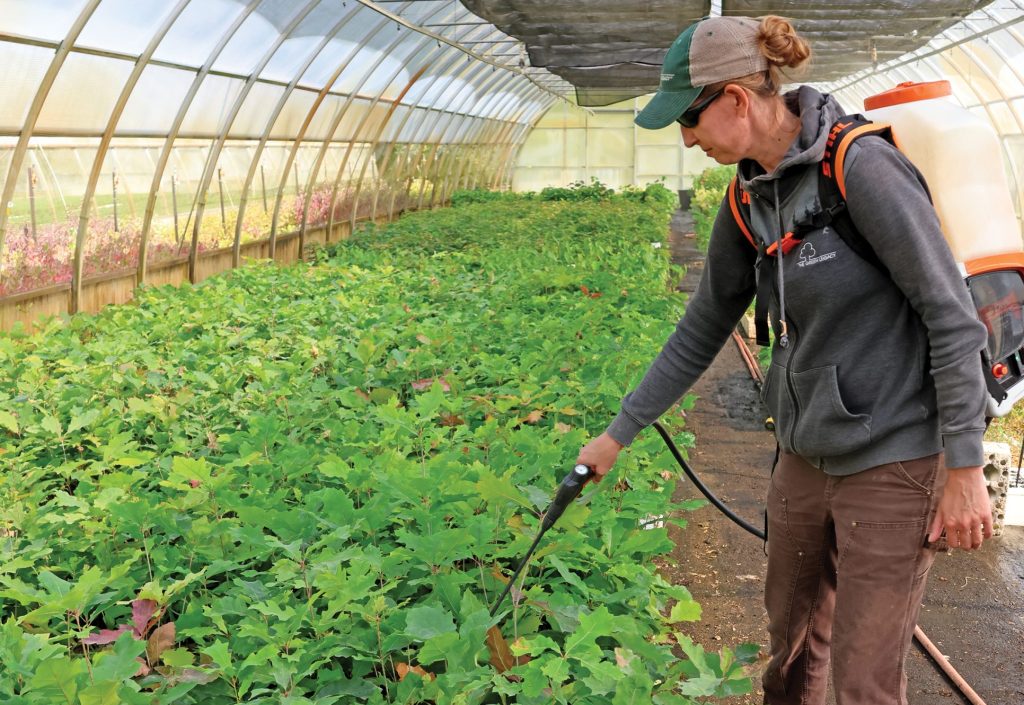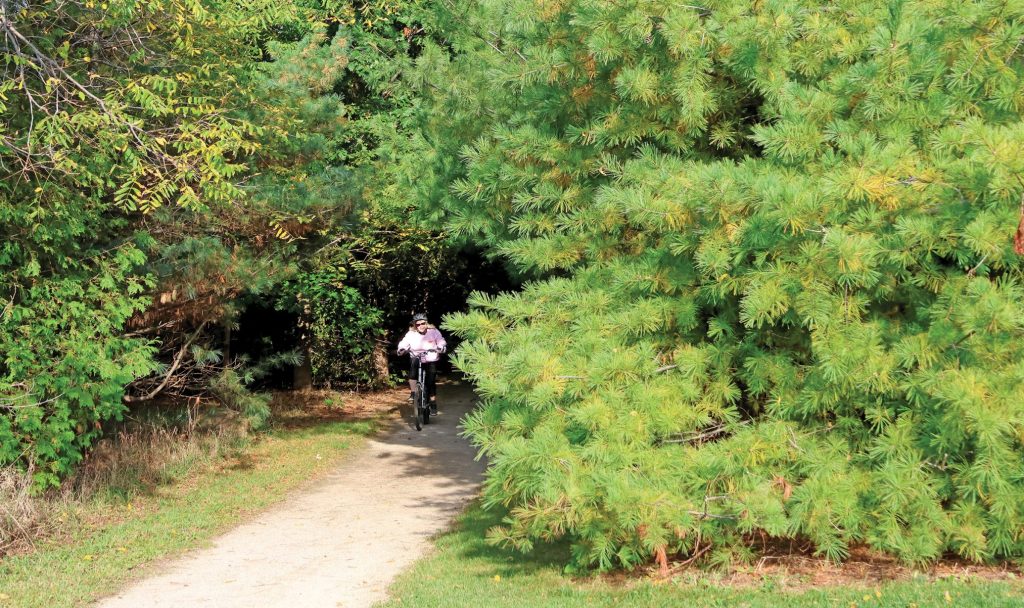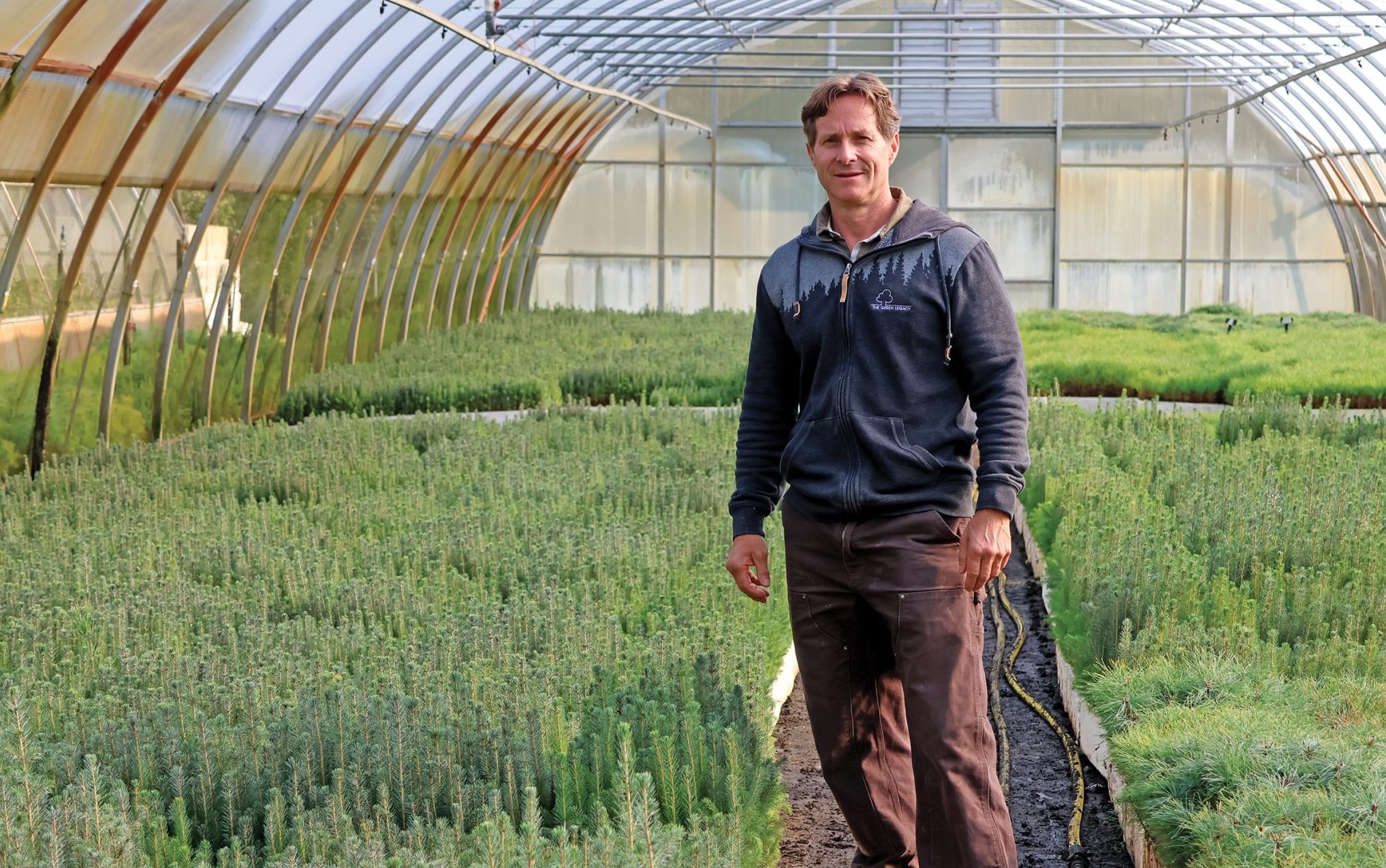WELLINGTON COUNTY – It was born out of an idea for a way to mark a milestone anniversary, but this year, Wellington County’s Green Legacy program marked its own milestone anniversary.
The program, which has grown to be the largest municipal tree planting program in North America, hit 20 years old in 2024, and it’s still going strong.
“It’s actually a lot more than just trees. It’s actually about the educational component and the community,” said Green Legacy program manager Rob Johnson.
He called Green Legacy the “brainchild” of the late Brad Whitcombe, a former Puslinch mayor and county warden.
The original idea had been to plant 150,000 trees in the county to celebrate the county’s 150th anniversary. I
t was the answer to the question: “what are we going to do to create a lasting legacy for the county?” said Johnson.
A committee was formed with members of council and representatives from local conservation authorities and the Ministry of Natural Resources, and they created a plan and put it into action.
“GRCA (Grand River Conservation Authority) said that’s not really possible,” Johnson recalled of the reaction to the committee’s plan. “But they heard the word ‘possible,’ and just sort of went with it.”
After the success of the first year, they decided to keep it going, but there was a key challenge that had to be overcome, Johnson said.
“Getting the trees and everything was a bit of an issue, and I said we can grow our own,” he said.
This is what the county has been doing ever since, with help from an army of volunteers – most of whom are students in local elementary and high schools.
“About 60 per cent of the work force is volunteer,” said Johnson, noting that pre-pandemic numbers saw between 18,000 and 20,000 volunteer hours put in at the county’s two tree nurseries annually.
Numbers have not yet returned to pre-pandemic levels, but Johnson said they are getting there.
Lori Albrecht is a Grade-6 teacher at Maryborough Public School whose students take part in the program.
“I have been planting trees with them since the start of the program,” Albrecht said in an email to the Advertiser.
“As I drive down the roads and see the trees that we have planted develop into wind breaks to slow the snow coming onto the road, tall trees growing to improve yields for the crops, I am so happy.”
She said junior students in the past have been involved in planting mid-sized trees at the local retirement home, along the roadside and on private properties.
In more recent years, her students have had the chance to visit Green Legacy’s northern nursery in Damascus, where they transplant seedlings to get them ready to send out to property owners who have requested them.
“What an incredible program that is working to involve kids in making a difference for our future,” Albrecht said of Green Legacy.
The process involving students starts, in some cases, when they are in kindergarten.
“We have three programs that we do with kids,” Johnson explained.
The first involves primary children in kindergarten to Grade 3, who do the work right in their classrooms.
The work starts just after March break when the students get a package with everything they need to start growing some trees from seed.
“Generally, it’s red oak that we do in the classroom,” said Johnson.
The classes receive the acorns pre-germinated, maximizing the chance of success in the planting stage, he said.
This not only makes for a better experience for the kids, but ensures when the polystyrene containers that hold the seedlings return to the nursery in June, every cell has something growing in it and no space in the nursery is wasted.
The kids get to watch a video about how to look after their little trees, and they do this work in the classroom between mid-March and early June, when the seedlings are picked up and brought to the nursery.
The next program involves bringing junior students in Grade 4 to 6 into the nursery.
“They come for the day . . . then they do jobs like transplanting,” said Johnson.

Nursery coordinator Jessica Trzoch sprays red oak seedlings with nematodes at the southern nursery in Puslinch.
Photo by Jessica Lovell
Green Legacy has two nurseries – the main one in Puslinch, just on the outskirts of Cambridge, and a location in the northern part of the county in Damascus.
Johnson said establishing the northern location was key to ensuring students in all parts of the county could participate.
“Every school is within 40 kilometres of a nursery,” he said.
The students are put to work in the nursery, and then they also get to go on an interpretive nature hike, so they can better understand the value of the work they are doing, Johnson said.
After all, “how do we make good decisions if we never see our natural world and learn about it?” he said.
“We’re educating that next generation that these things are important to modify climate.”
The older students – those in Grades 7 and 8, and also some high school students – take part in the third program, which sees them “go tree planting in the community,” said Johnson.
The trees get planted in various locations, with the overall goal of the program being to increase the tree canopy in the county, but one focus has been to create windbreaks and living snow fences.
And there are many more types of species than just oaks.
“We usually have around 50 species,” said Johnson, noting that attention is paid to planting the right tree at the right location.
Seeds are collected locally by volunteers, some of whom are experts in the field who have retired, he said.
“They just want to see them propagated,” he said.
At the nurseries, Johnson said there are as many as 750,000 at various stages of development growing at any given time.
“Everywhere that I have space, we put trees,” he said.
Approximately 150,000 get distributed for free every year to residents, local environmental groups, service clubs, schools and member municipalities, with orders beginning in the fall and trees delivered in the spring.
Johnson couldn’t say for sure what impact the plantings are having on the overall tree canopy, because while millions of trees are being planted, there are also trees being lost at the same time.
“I sometimes think we’re only keeping up,” said Johnson.
But there are certainly places where the impact is visible.

Trees line this trail near Wellington Terrace retirement home thanks to the Green Legacy program. The area is one where the impact of the program is starting to show, as the trees were just little when they went in the ground nearly 20 years ago, and they now completely shade the trail.
Photo by Jessica Lovell
For example, an area off Arkell Road where high school students in an environmental leadership program took on a planting project with a goal of carbon neutrality for the bus the students road.
“All these trees were planted over the last 10 years,” said Johnson, pointing to the area where the trees, though not towering, are dense and healthy. “When you walk it, it’s phenomenal, because it’s a forest now.”
The 20th anniversary of Green Legacy was celebrated with relatively little fanfare.
Over the past 20 years, the program has been celebrated many times, and has won multiple awards, including recognition from the United Nations for its contributions to the Plant for the Planet: One Billion Tree Campaign.
This year, the county has noted the milestone anniversary on its website, with a link to the program page, that describes the legacy of the Green Legacy program.
“For the last 20 years, the Green Legacy has been strengthening our community’s view toward the value of trees and our environment,” it states.
Remarkable Green Legacy numbers
• less than 15,000 – annual staff hours at Green Legacy
• 18,000 to 20,000 – annual volunteer hours
• 5,000 – approximate number of students taking part each year
• 2 – nurseries
• 6 – greenhouses
• 50 – tree species
• 750,000 – trees growing at the nurseries
• 150,000 – trees distributed annually
• 3.3 million and counting – number of trees planted since 2004



